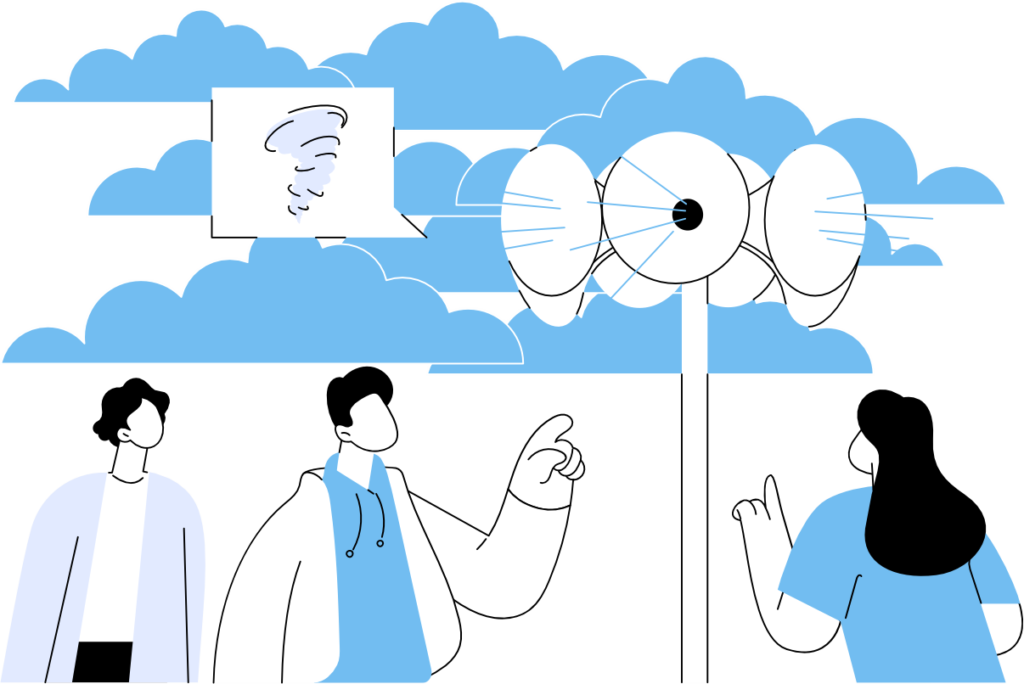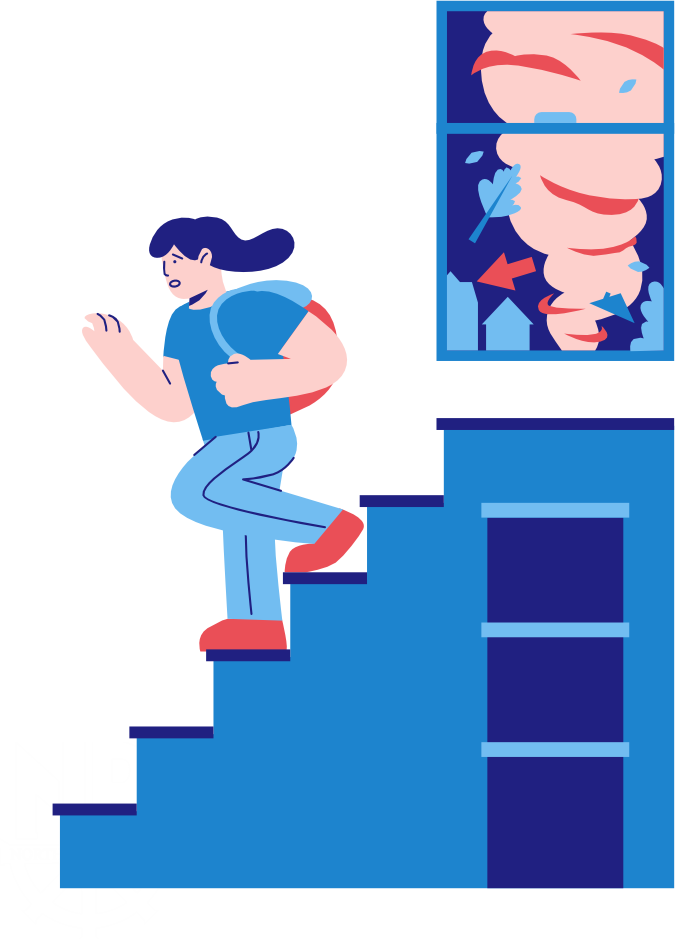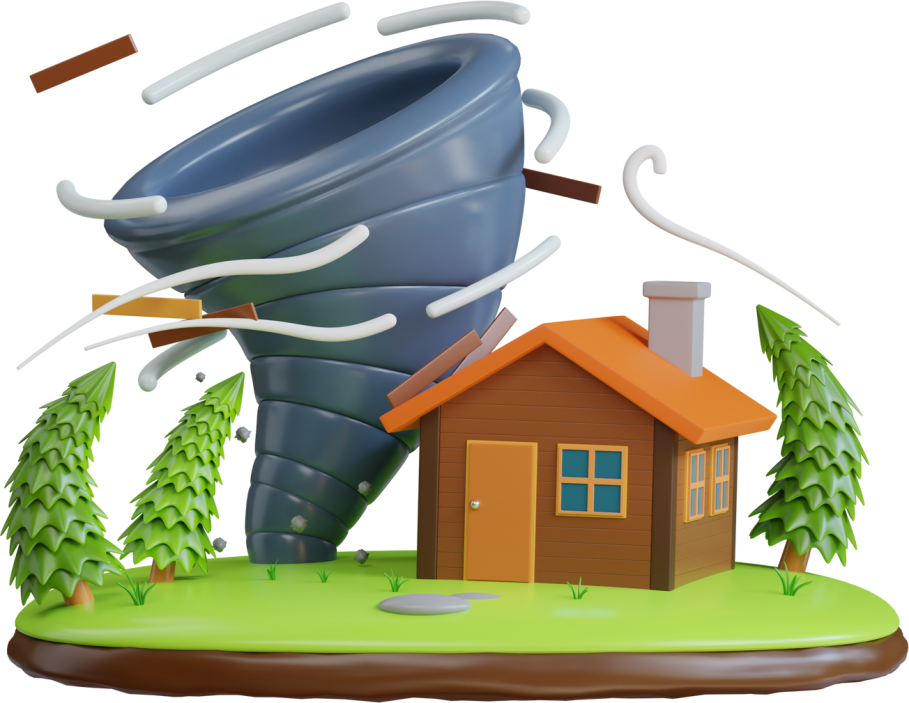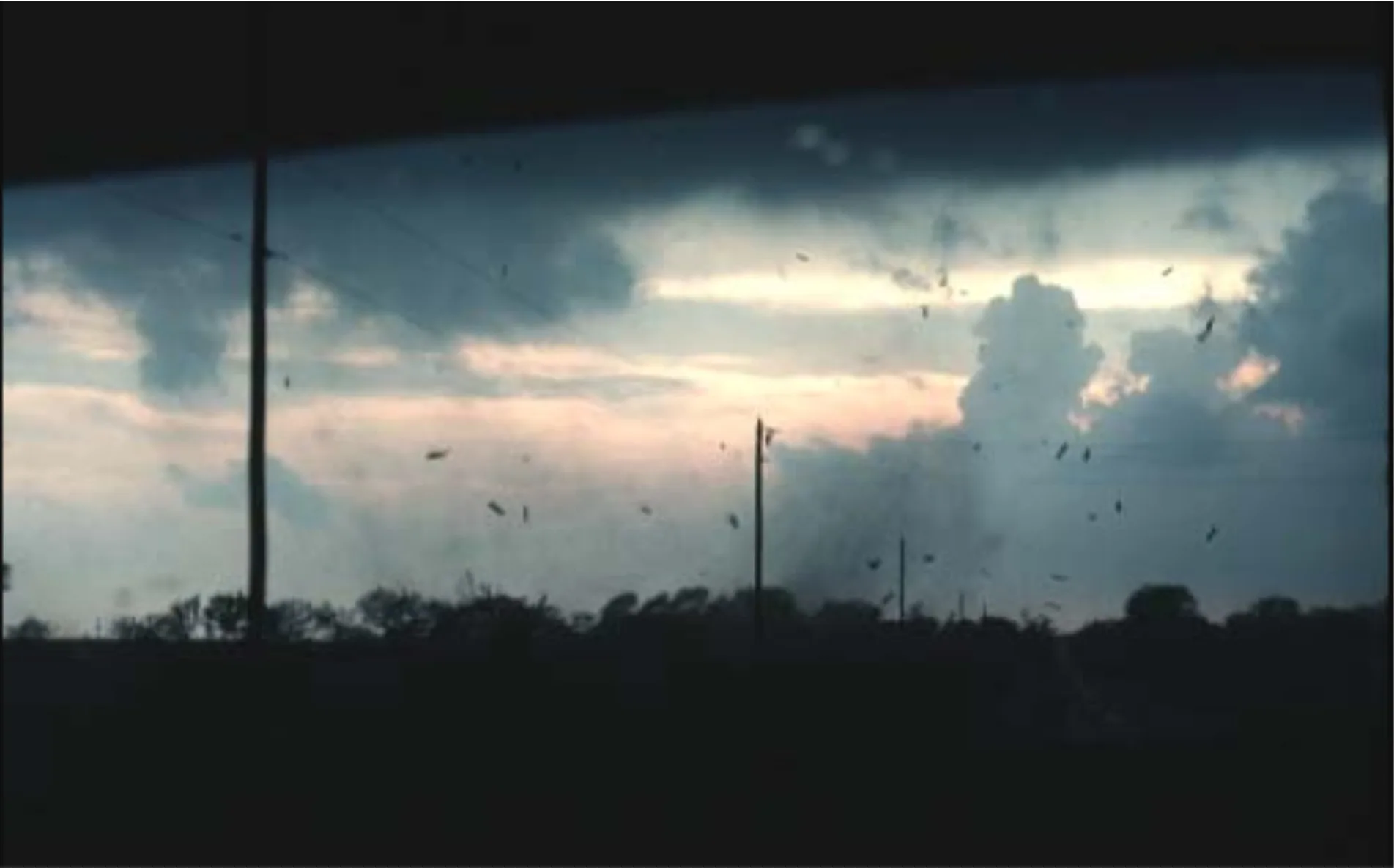WHAT IS A TORNADO?
A tornado is a violently rotating column of air extending from the base of a thunderstorm down to the ground. Tornadoes are capable of destroying well-made structures, uprooting trees, and hurling objects through the air. Tornadoes can occur at any time (day or night) and during any month of the year.
TORNADO WATCH VS TORNADO WARNING
- TORNADO WATCH: Be Prepared! A Tornado Watch means that tornadoes are possible in and near the watch area.
- TORNADO WARNING: TAKE Action! A tornado has been sighted or indicated by weather radar in or near the area.

TORNADO SIRENS
North Little Rock tests tornado sirens every Wednesday at noon, unless there’s severe weather. These outdoor warning systems are meant to alert people outside of potential danger. The sirens may not be heard well inside buildings. During tests, an automated voice announces it’s a test, followed by a siren and another voice confirming the test’s completion. In a real Tornado Warning, only the siren wail is activated. The city has strategically placed sirens throughout, and they sound when the National Weather Service issues a Tornado Warning within a geographical boundary, which includes a five-mile radius outside the city limits. This prepares citizens for potential tornadoes approaching the city.

HOW TO PREPARE FOR A TORNADO
- Check the forecast regularly and listen to local news and NOAA Weather Radios.
- Have a communication plan for your family.
- Pick a safe room in your home to go to during a tornado. The safe room should be a small room that is close to the ground and away from outside doors, windows, and walls.
- Prepare your home by keeping trees in your yard trimmed and bringing in or tying down any outside furniture that could become dangerous projectiles.
- Have an emergency preparedness kit in your home. The kit should include items such as water, non-perishable food, flashlight, cellphone, and backup batteries.
- Bring pets inside.
- Know where the tornado shelter location is at your work and/or school.

WHAT TO DO DURING A TORNADO
- Continue to listen to the local news or NOAA Weather Radio to stay up to date.
- If you are at home, go to your basement, safe room, or an interior room away from windows.
- If you are at work or school, proceed to their tornado shelter location.
- If you are outside, seek shelter inside a sturdy building immediately. Sheds, storage facilities, tents, and mobile homes are not safe.
- The National Weather Service states that being in a vehicle during a tornado is not safe. The best course of action is to drive to the closest tornado-safe shelter. If you are unable to make it to a safe shelter, either get down in your car and cover your head, or abandon your car and seek shelter in a low-lying area such as a ditch or ravine.

WHAT TO DO AFTER A TORNADO
- Stay informed, continue to listen to the news and radio for updates.
- Contact your family and loved ones.
- Assess the damage and call local authorities for any power lines down and ruptured gas lines.
- Stay out of damaged buildings and any structures that could fall.

Sources:


